Why do companies still try to cheat their customers? Is it because they think we won’t notice? Or do they believe that there are enough people willing to buy their brand for the first time, that they don’t need to worry about getting that second purchase? Either way, they clearly haven’t heard that the most important attribute a brand needs to build is trust!
With so many purchases being made online these days, there is a growing number of articles exposing the behaviours of organisations who obviously haven’t adopted a customer-first strategy. Companies who still think it’s OK to try to attract customers and entice people to make that all-important first purchase, with less than honest promises.
I know that this has always been the case in some industries and companies. Brands try to convince people that what they have to offer is exactly what their potential customers need – even when it isn’t. However, in today’s socially connected world, it surprises me that many organisations continue to believe that they can “get away with it” whatever “it” might be!
Perhaps they are not aware of what they are doing. Perhaps they think no-one else will notice. Whatever the reasons for such practices, I thought that it is once again time to call them out with some new examples of the more common behaviours. Some of them are even from large global multinationals who should know what they are doing! Such a shame – but it does make for some fun reading!
Dishonest labelling
In many cases, packaging is the first personal contact a customer has with a brand. Whether in advertising or on shelf, based upon what they see, people will quickly decide whether or not your brand is worth investigating further. If so, they will read on, or if in store they will pick it up and read the label, perhaps comparing it to competitive brands.
Why then do businesses still believe that they can pretend to be what they clearly are not? I learnt many years ago to never believe what is written on front-of-pack. Unfortunately, what is still shown in the majority of cases, is exaggerated if not completely false.
Here are some examples of the different tricks some brands play in the hope of attracting that first purchase. But these tricks will only lead to a disappointed purchaser and will rarely lead to repeat purchases.

I know we’re currently in Winter in the Northern hemisphere and most of us are in lockdown, but we are certainly already dreaming of the day we can get back out and enjoy family bar-b-qs.
And many of us will want a bright and happy design covering our table. This tablecloth looked perfect in the pack, but despite saying it is printed all over, the design is only on the border. It is packed so that only the design shows, so most would never even read the back of pack.
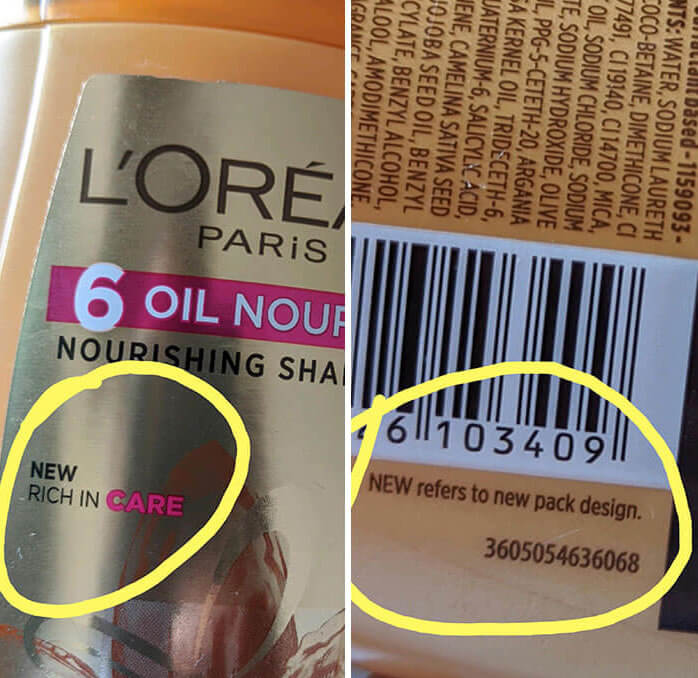
I’m a big fan of L’Oreal and regularly get drawn to their new products. Again I wouldn’t have checked the back of pack to understand the meaning of the word “new” printed on the front label, would you?
Obviously we need to pay more attention to what is written on packs as in this case it is the pack design not the contents that are new.
The fact that the word appears just above the “rich in care” claim makes it obvious that L’Oreal were not trying to avoid any misunderstanding by their purchasers. How would you feel when you got the bottle home and found it was exactly the same as your current pack? Disappointed, angry?
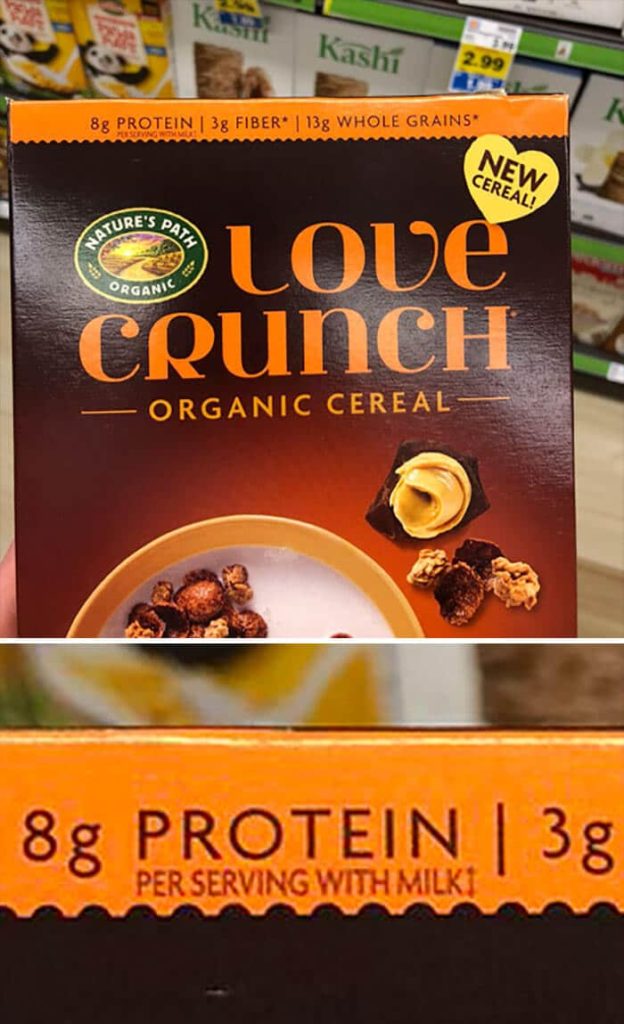
As with the previous example, a quick read on shelf of this cereal box and you would believe that the contents are high in protein. Its from Natures Path too, so you would probably think that it is all natural and therefore trustworthy (well I for one trust nature).
Look again. The protein claim is for a serving and is primarily coming from the milk you add! Remember, never believe what is printed on the front of pack!
Dishonest packaging
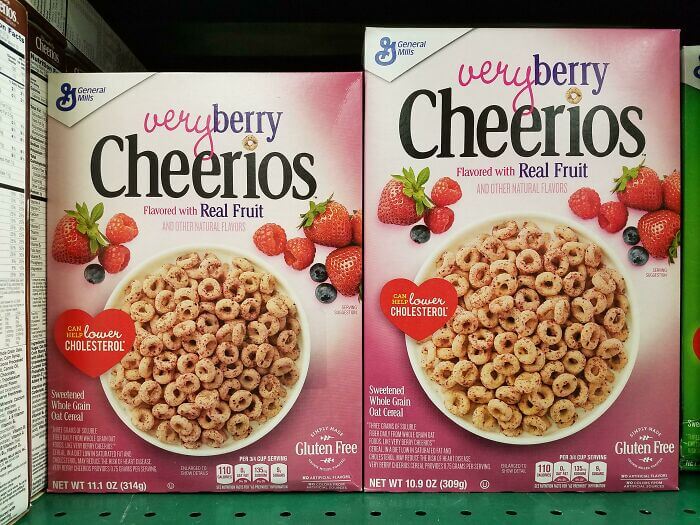
The second cereal example, this time from General Mills, is wrong for several reasons!
Firstly they have made the pack bigger – but the contents smaller! No doubt they wanted more shelf impact, judging from the competitor packs you can just make out on the left of the photo, but they decided to get a price increase too by reducing the quantity of the contents.
In a time where consumers are asking manufacturers to be more responsible, such as making less waste in their packaging, General Mills is going in the opposite direction!
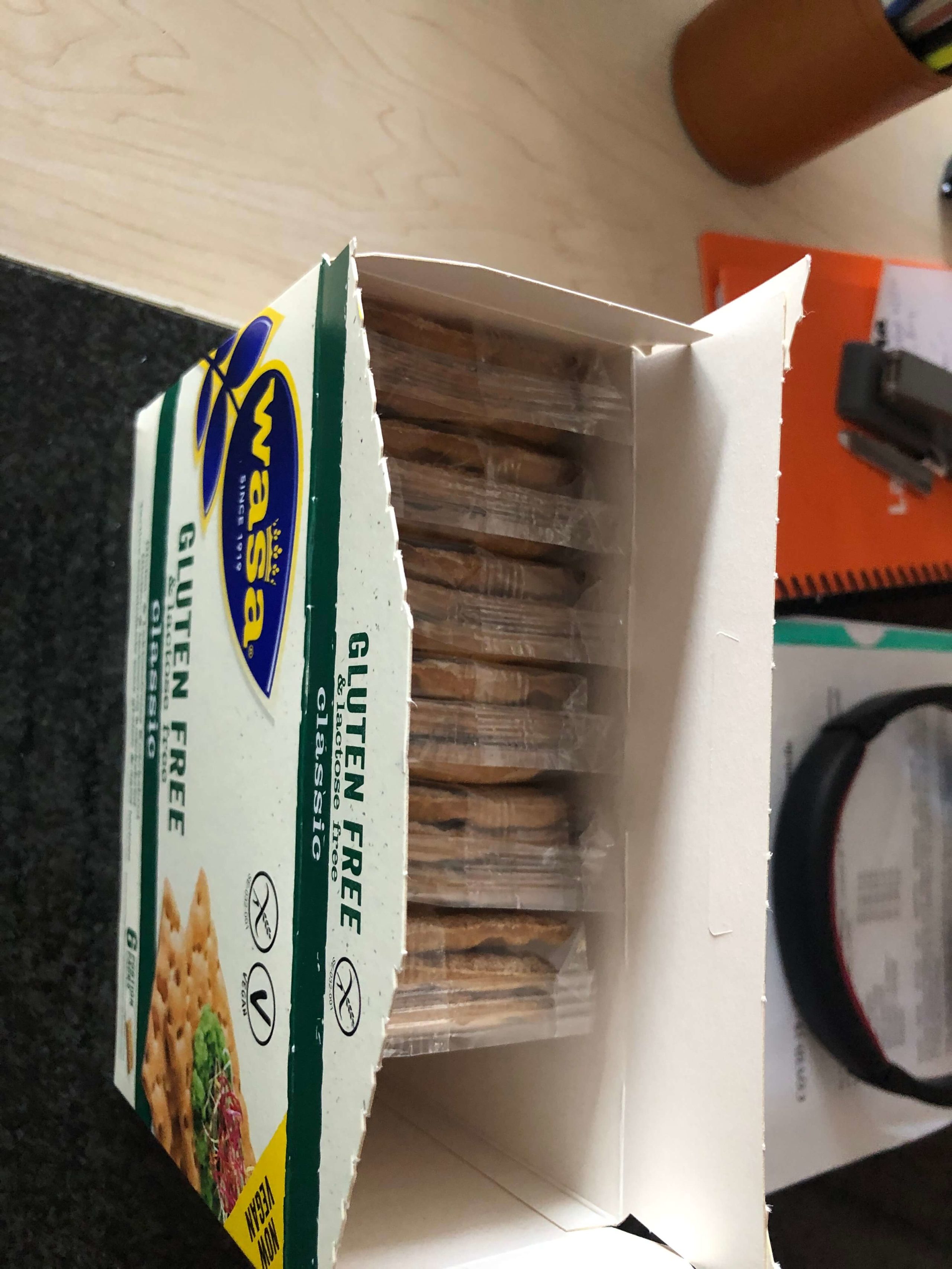
The next packaging example was one I found when opening my usual brand of crispbread.
At some point, they must have reduced the content without my even noticing, as I usually transfer them immediately into a hermetic box to keep them fresh once opened.
I know that cereal boxes do not appear to be filled when we first open them, but we have come to accept the explanation that the contents have settled during transport.
No such claim can be made for biscuits. This is just one example that I found, but unfortunately it seems to have become the norm in the industry in recent years.
The final packaging example comes from the beauty industry, where misleading packaging seems to be the norm, at least from my own experience.
From tiny bottles packed in large plastic holders and huge boxes, to bottles that contain minuscule amounts of product compared to the container size, that manufacturers seem to think is acceptable.
If everyone is doing it, the customer knows, right? Wrong! We may see the quantity printed on the box but most of us can’t assess how much that really is.
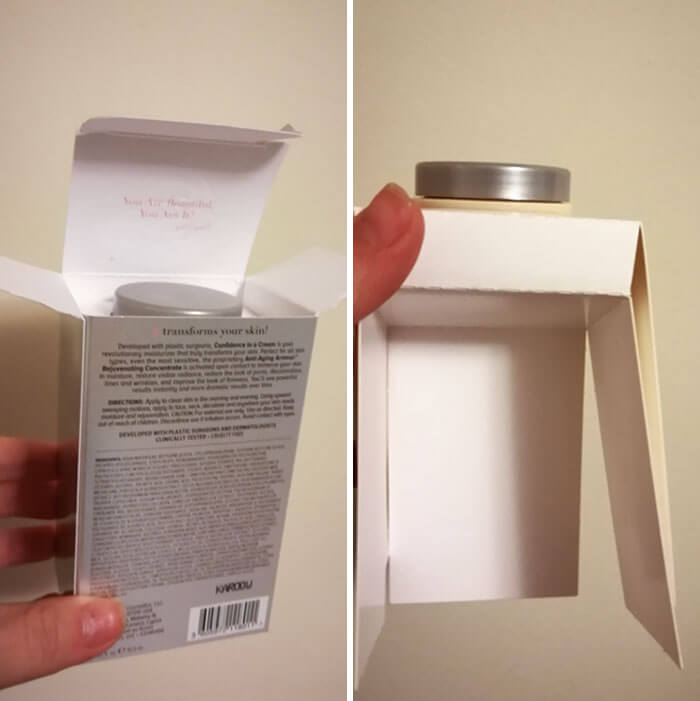
This example on the right is so ridiculous I can only suppose the manufacturer wanted to get more impact on-shelf for his tiny product. It’s still totally unacceptable.
Dishonest promotions
We all love promotions and price-offs, don’t we? Well, it looks like we should be paying a little more attention to the shelf edge labels judging from the below examples.

I find this one on the left almost laughable because it is so clear!
I took the photo in a 99p store in the UK, where everything is 99p – dah!
So why bother to pretend this is a discount from the regular price of – 99p?

The Nike shoe “promotion” shown on the right is not much better, it’s plain cheating by the store (which is certainly not the brand’s store I must add).
The “NOW” price suggests that it was more expensive before. Well, it should at least in my opinion. In this case, it was indeed cheaper – by exactly one cent!
Not sure that qualifies for a “NOW” shout-out on the shelf edge label, unless you are trying to make buyers believe they’re getting a good deal.
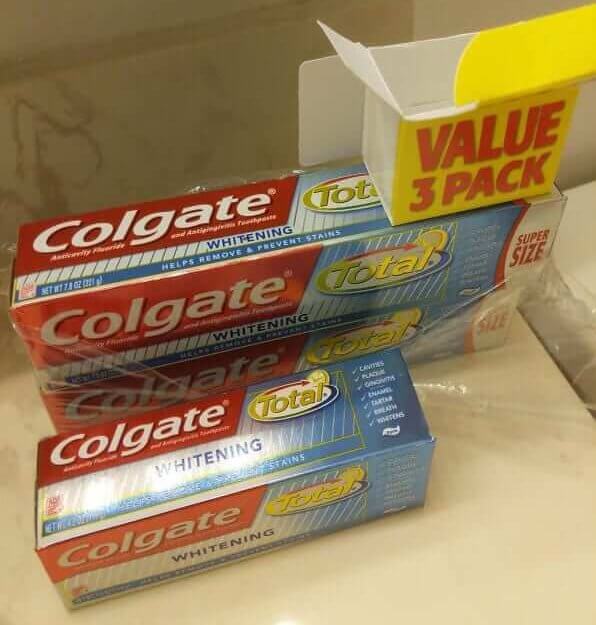
It is true that this Colgate offer on the left doesn’t actually say that the three packs are of the same size, but purchasers should be forgiven for understanding it in this way – and no doubt that was the intention!
As I mentioned at the start of this article, it is so, so sad that even large and usually trusted multinationals are stooping to such low levels to get more money out of their most loyal customers. Well, at least they probably were loyal until they bought their cheating promotions!
Dishonest ratings
These have been in the news so much recently, especially for online. From restaurants and hotel reviews on TripAdvisor to product and delivery stars on Amazon, we all know to pay attention to just how many people voted to get the scores.
It is also a good idea to review the top and bottom scorers for the similarity of comments and believability. They could have been placed by the sellers or their competitors, so never base your purchase decision on just the overall rating; check the details.
Another area that has come under scrutiny in recent years for false ratings is the car industry. Many (most?) of them have been called out for false consumption claims which resulted in them getting a lower pollution score. Hopefully, most if not all these fake numbers have now been replaced by more honest ones.
The scandal started with Volkswagen AG admitting to engineering its diesel vehicles to cheat on emissions’ testing. Then Ford joined the list, with drivers in a U.S. lawsuit claiming that 500,000 Super Duty pickup trucks had also been rigged to beat the emissions tests.
And other European car makers are no better. German manufacturers have been accused of operating a 20-year “cartel” to impose a premium on consumers while stifling innovation, including pollution controls. Bloomberg has a good article explaining the topic if you want to learn more.
Dishonest products
I believe that this is rampant in the food industry in particular, although I am not sure the outlandish promises (and packaging as shown above) of the beauty industry don’t warrant a mention here too!
From enticing images on (front of!) pack, to the disappointing contents, we are regularly shocked by just how far from reality the product photos are. Here are a few of the funniest ones I’ve come across.

The first example is from the Morrisons supermarket chain in the UK. I think by triple pepperoni they meant the three slices of meat! At least that is what you get on your pizza (no sorry there are four if you search for them!). What did you expect for one pound fifty?

The next one on the left is more subtle. It does say it’s solid chocolate and that’s true. It’s just that you only get half a cup, not the whole one I bet purchasers were expecting.

The third food example is also from a chocolate manufacturer, who takes cheating to a whole new level.
See the photo on the right; it must have been a manufacturing nightmare to position the cranberries precisely so that they are seen through the transparent section of the packaging!
Oh wait, I just saw it says it is “handmade” so the six cranberries were carefully placed on the tablet! Maybe that’s how they could use the claim, after manufacturing the chocolate tablet by machine.
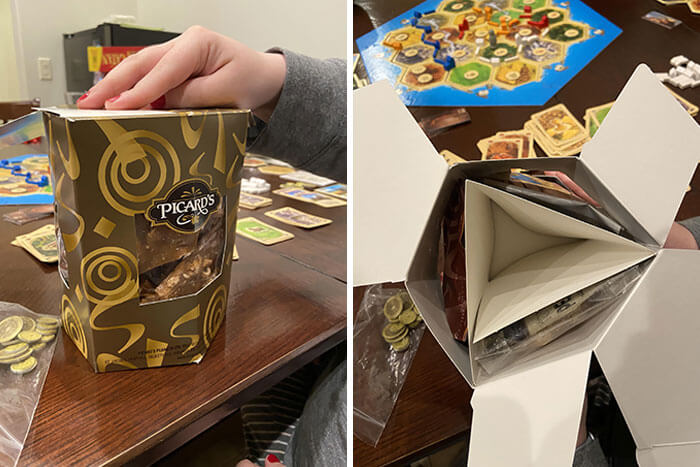
The final example on the left makes me wonder how any marketer could accept to do such a thing to their customers?!!
Apart from the excessive cardboard used, it is clear that the intention was to cheat the purchaser into thinking he/she was getting far more than the actual contents of the pack.
Dishonest pricing

The “promotion” for cheap parking on the right only becomes less of a bargain as you are probably driving into the carpark and see up close the “for 10 minutes” in tiny font at the bottom of the panel.
They will only get your business once, if at all and I bet you’d warn your friends and family not to park there.
Many of the dishonest promotions packagings mentioned above would also qualify as dishonest pricing. But one common practice on pricing that is beginning to irritate me, is to use of the words “up to” usually in small font compared to the large font used for the discount being offered.
We come across this and the BOGO (buy one get one) offers frequently. BOGO started its life as BOGOF (for free, making the two products 50% cheaper) and I believe that many people still interpret the message as such. I think buyers beware should be the new norm when being promised such discounts. I myself make a point of ignoring them, because I know I will always be disappointed with the actual offer, compared to my first interpretation of it.
Dishonesty online
I couldn’t finish this review of companies and brands that cheat the customer without mentioning some of the dishonest online practices too.
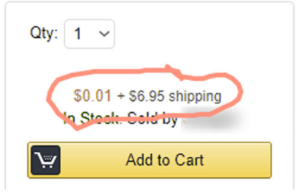
These include offering something for free and then charging “only for shipping and handling” which is usually more than the item is worth!
And asking for credit card details at the time of a free trial. This is no doubt in the hope that many people will forget to cancel before their trial runs out and that get locked into the purchase of a product or service they perhaps hadn’t intended to buy.
I am happy to see that some brands are now offering trials without requesting credit card details, or are sending out a reminder before the end of the trial to remind their (potential) customers that they will be charged if the service is not cancelled before a certain date. Well done to those customer-centric brands for their honesty.
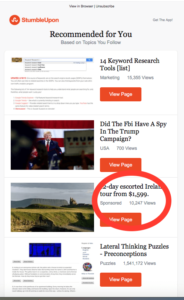
Another habit that is becoming prevalent, even on Google, is the blurring between search results or newsletter topics, and advertising.
The example on the right comes from an email I received a while back from StumbleUpon (now called Mix).
I had been such a fan of theirs for years, as they had always suggested interesting articles I might not have found otherwise.
This new attempt of theirs to “hide” advertising amongst their list of suggestions irritated me immensely, because they made it an integral part of the list.
I cancelled my subscription as soon as I noticed it and wonder if others did too, as they have since changed names.
At least Google does add lines, albeit very light grey ones, in their search results.
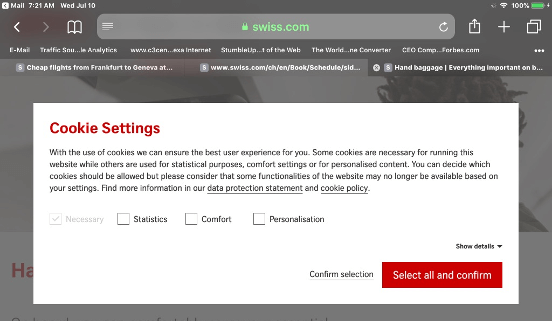
One more example of cheating online is the usage of a bright colour to entice surfers to click a button, when it is not the option they would have chosen, had they had bothered to read the text (which we don’t do any more, we just skim read).
In the example on the left from Swiss (and also used by their parent company Lufthansa), readers would be drawn to click on the red button to approve the cookies. However, to accept only the required ones, you would need to click the word in light grey to the left of the red button.


Finally, and probably the most rampant of all cheating these days, are the online clothing scandals.
Many articles have been written which compare the article ordered and the rip-off Asian copy received. Here is just one example, but you can see many more at MailOnline.
Definitely worth a laugh, but I do feel sorry for the girl who ordered it, although as she posted her photos on Facbook, I think she saw the funny side too.
There is no way that this builds loyal customers, but perhaps in China (from where most of these sites seem to be doing business) the population is so huge that they believe that they can keep this going a few years until they can improve the quality of their copies!
And for those of us who have purchased such merchandise, the hassle and cost of returning such an article after waiting weeks to receive it, is just not worth the effort and we move our purchasing elsewhere.
The solution(s)
None of the above examples would happen if organisations adopted the use of my “Magic” question. What is it? It is simply to ask yourself every time you take a decision:
“What would our customers think of the decision we’ve just taken?”
If the answer is that they wouldn’t like it, then the decision needs to be reconsidered.
I hear some people (Jeanne Bliss’s book for example) asking “would be mother, sister, girlfriend like it?” If you prefer that way of thinking, fine by me – just as long as you reconsider your decisions in light of these questions. If you wouldn’t do it to your friends and family, why do it to your customers? They are members of someone else’s family after all.
[bctt tweet=”What’s the solution to cheating companies? Just be more honest and ask the magic question ‘What would our customers think?’ #CEX #CRM #CustomerFirst #CustomerCentricity #CustomerSatisfaction” username=”Denysech”]
Another solution, of course, is just to be more honest.
So to end on a (relative) high, here are a few examples of businesses who “tell it like it is.”
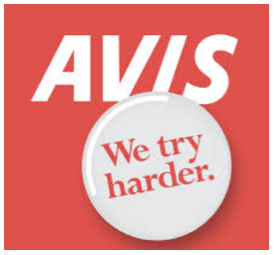
One company who has benefited from telling the truth – and there aren’t that many! – is Avis.
Their “We try harder” campaign launched in 1962, turned into a strategy for the whole business – and took Avis from an 18% market share to 34% in a very short time.
More than fifty years on, it’s still their slogan. (That in itself is amazing: how many brand ideas last fifty years?)
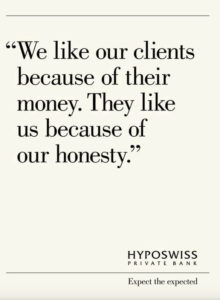
Another example of an honest company, is, perhaps surprisingly, from a Swiss financial institution Hyposwiss. In their “honest campaign” they take a refreshing view of money – yours in particular.
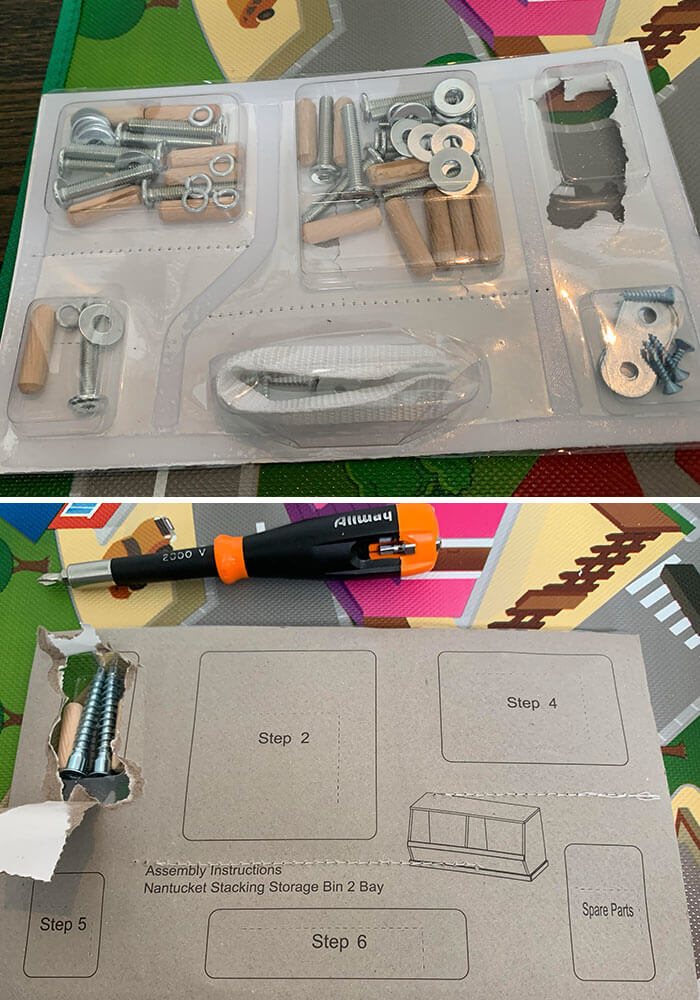
The last couple of examples are exceptionally customer centric.
I just love it when companies clearly have put themselves in the shoes of their customers and found small but impactful ways for people to fall in love with their brands and the solutions they offer.
The first on the left is to help customers when they have to build the flatback furniture they bought. Ikea could learn a thing or two from this hardware store. I am sure many of us would pay extra for this added convenience.
Although I used to build my flatpacks myself when I was (much) younger, I am afraid with age I have given up. But making it this easy might just tempt me to have another go. You too?
I recently heard that Ikea will be offering spare parts, not just missing nails and screws, so their buyers don’t have to replace the whole article if something breaks or wears out. They say they are doing this for sustainability reasons, but I’m happy they are also showing that they listen to their customers.

On the right, is a photo of another simple idea, but one that would save every bed-maker both time and frustration. I always have to compare the two lengths of a fitted sheet to know where top is!
As I already said, putting yourself in your customers’ shoes will highlight many ways you can make their lives easier. This example is in reality a tiny advantage, but one that would tip the balance when buying fitted sheets for many people.
That is the key to customer-centricity; making your customers happy to pay more than the cost to you of adding a feature because they value your solution, as well as your attention and understanding of their needs.




Thank you for making this post. Marketing and sales ethics is an important topic, but it’s one that receives insufficient attention. The examples you’ve provided struck me as encompassing the gamut between benign to heinous. Without delving into each instance, I’ll first share that many of the pricing strategies I’ve seen involve what I’ll call ‘sleight of hand.’ The most common one we see are prices ending in .99 – just one penny shy of the next highest dollar. As consumers, we’ve come to recognize the illusion – but that doesn’t mean we’re immune. The retailer is betting that most people will will lock on the number to the left of the decimal point. Based on how widespread this practice is, I’ll posit that they’re not suffering from giving up the “extra penny.”
Is this practice “cheating” the customer? Most would say it isn’t. They would argue that customers should be savvy to this pricing obfuscation, and I understand the point. But then, where do you draw the line between what constitutes cheating and what is effective marketing? To me, some of the other examples you’ve provided are more clear cut. But many – and in my practice, most – are not.
Complicating this dynamic is the fact that information between buyers and sellers is always asymmetric. Buyers don’t have perfect clarity on what constitutes a fair price, and sellers don’t have perfect information on what, exactly, appeals to buyers and what price they are willing to pay. Getting consensus on what makes a given marketing practice unethical compares to picking up a raw egg with a fork. It isn’t easy.
Your question, “What would our customers think of the decision we’ve just taken?” is a good starting point. That could prevent a nefarious strategy tactic from being deployed. But I could rationalize my choice multiple ways. To give just a few examples: “It’s an industry practice. Everyone does it.” “Sure, it’s borderline, but it doesn’t harm anyone.” “I don’t think it’s wrong if the customer doesn’t notice.” “I don’t like it, but unless I go along, my job is in jeopardy.” “It might disadvantage customers, but it’s only a handful. And if our team doesn’t make target, we miss making our quarterly bonus. That hurts everyone.”
In my latest post, A Guide for Making Ethical Marketing Decisions, (please see https://customerthink.com/would-an-idiot-do-that-a-practical-guide-for-ethical-marketing-decisions/) I recommended asking the following:
Would I be embarrassed if another customer learned about my choice or actions?
Would other business developers consider my decision ethically borderline or unethical?
If I were confronted about this decision during a future job interview, would it disqualify me from consideration? Would I be able to convincingly justify my actions?
Would I feel regret or remorse if I described my decision or activity to a family member?
Would I be upset if someone else shared my actions on social media or in the news?
Would I feel wronged if the same thing were done to me?
If everyone engaged in this practice or activity, would society be worse off?
A takeaway from your article is that unethical choices are always among the possibilities. Unfortunately, many companies I have worked with have recognized this after one or more of their stakeholders was harmed. Their biggest mistake was believing “that type of thing could never happen here.”
It can – and it will unless steps are taken to mitigate the risks.
My book on marketing and sales ethics to be published later this year will cover this in detail in one of the chapters.
Hi Andrew,
Thanks for the thoughtful and detailed response to my post. You take it much deeper than I did and with the coming launch of your book I understand.
Glad to see we are aligned in our frustration. I do hope your book brings more attention to this issue and will help many understand that building trust takes more than saying to customers that they can trust your brand. It is in our every task every day that we show just how trustful we are.
It reminds me of another popular topic that many talk about but far fewer walk the talk, that of customer centricity.
I wrote a popular book on the topic a few years ago called Winning Customer Centricity: Putting your customers at the heart of business – One day at a time. Do check it out; you can download a sample on my website C3Centricity.com.
I really enjoyed this article. I use to do the weekly home grocery shopping, not really paying much attention. Simply because I was for the most part buying the same products. (A typical New England family that doesn’t make changes to things that work!) But I began to notice a change in how fast we were running out the basic staples like cold and hot cereal, afterschool snacks, canned good staples, pasta, and sauce mixes just to name a few. So I started to pay closer attention to exactly how much of an increase in these items I was currently buying and why? And I don’t mind telling you that I was really PISSED OFF once I realized why I was buying more of what I have always considered basic monthly pantry items. All of these Items had been downsized but their prices had been upsized!!!!
This whole SCAM of downsizing that companies are pulling all across this country with increasing the cost of the product is just like the whole Healthy Lite Food scam that started in the ’80s and no one in the Consumer Protection Agency of our Government ever did anything to stop.
And this scam continues to this day. The whole charging more for something like 1% milk than whole milk because the fat had to be removed from the milk? And the customer is supposed to believe that the company threw away the bi-product that increased the fat in milk?? When we all know that is not what happens at all. That dairy companies actually use and sell that bi-product because it is sold as any product that contains dairy fat in it. And when the Dairy companies began to charge more for milk with less fat they also up the cost of products that contained more fat in them. So there you have it a group of companies that continue to have their CAKE AND EAT IT TOO!. That is just one example of that whole food pricing scam that food companies continue to get away with. and now there is this packaging SCAM which companies are calling downsizing to prevent waste!!! So if these companies are so concerned with waste that they have decided to downsize the amount of product they are packing to sell to the American public. It only makes sense that the amount of material to make the product container is smaller too so that would cut the cost of production for the company. Along with the amount of ink for printing of the labels or containers of the products. So this whole downsizing of a product really is a cost-cutter for most companies. So why is it that the majority of products that have been downsized have had a very significant price increase?
I’m going to tell you right now why companies are behaving like this. They are doing this because they CAN!!!! No one is STOPPING THESE COMPANIES! So why would anyone think the CEO’s, XO’s, or Owners would have the ETHICS to stop themselves!!! They have never had those kinds of self-controlling ETHICS in the past and they still do not have them. Their game has always been to take as much money from the consumer as fast as they can as long as they can before anyone catches on to a possible ETHICS or LEGAL violation happening within the company. And even then most companies will not stop until a Court actually orders them to stop. or a group of consumers has brought a Class action case against the company. And even then some of these companies just settle out of court and continue on with their SCAMMING the American Consumer!!!! And they don’t stop until they are actually ordered out of business or CRIMINAL CHARGES are brought against either the owner or the CEO and XEO.
So Ya I finally did realize why the cost of my weekly shopping had gone up so much and it wasn’t because of people in the house eating more. It was due to the current VERY ACTIVE DOWNSIZING SCAMS HAPPENING ALL OVER THIS COUNTRY!!!! The downsizing of Canned Tuna, Cold Cereal, All forms of Boxed Mac and Cheese, instant oatmeal envelopes, instant hot cocoa envelopes, a bag of mini marshmallows, all brands of frozen vegetables, most frozen dinners, a family size box of crackers, bagged chips, oh and let’s not forget pet food that is also being downsized but the price has more than quadrupled in a years time. Yup 2020 was not just the year we were all hit with this pandemic. It has also been the year that big businesses decided to financially screw the American consumer right where they couldn’t really complain too much because hey we are all just trying to make it through this pandemic. RIGHT??!!!
This is the saying that fits here ( While the CATS AWAY! THE MICE WILL PLAY!)
Hey Aileen thanks for sharing all your experiences. It is so sad that there are (too) many companies trying to cheat the customer and in so many ways, as my article covered.
There always comes a day though when the customer wonders why their bill is so high, or how they seem to be getting through their purchases more quickly than in the past. That’s when they pay attention to what they purchase and discover the changes. That was my case with the Wasa crispbreads, but I will never know when the company made the change, as the price stayed the same.
Hopefully with articles such as this one and Andrews that he mentioned in his reply, we will finally get the message across that it’s time that all businesses become more customer centric and adopt a customer-first strategy. If they just ask my magic question “What would our customers think of our decision” they would avoid so much bad feeling and loss of loyalty.
Thanks again for commenting.
I really enjoyed this post and I also have an on-going list of ‘packaging and practices that bother me’. This stuff really is long hanging fruit, but i think of lot of folks (especially in CPG) think they are smarter than customers. That kind of hubris puts big companies out of business. Thanks for sharing.
So happy you enjoyed the article Dave and even more for taking the time to comment too.
You mention you have some good examples; any you want to share here? I’d love to get some newer examples as I am always on the lookout for companies thinking they can outsmart the customer. So silly!
Brilliant post, Denyse! How businesses, (and other organisations and governments,) think that they can still get away with this in a world that is so incredibly connected stuns me. What is crazy is that these examples are just the tip of the iceberg – how many do we not hear about as publicly as these? I am a diabetic, and when I started to do my homework about what goes into our foods, for example, it was shocking. The sugar industry, for example, is using exactly the same tactics used by the cigarette industry a few decades ago. Still, If Nicholas Sarkozy, (past President of France,) is going to jail for a while for dubious behaviour, it gives me hope that perhaps there will be consequences for others too. (Aileen, I can see your passion on this subject too.)
(And, Andrew Rudin, your contribution was also insightful and enjoyable too.)
Thanks Aki, appreciate the comments.
As this post is getting so much attention and comments, it looks like I’ll have to do another one on the good guys in more detail soon. Perhaps the bad guys need some ideas and inspiration?
Hi Denyse, thanks for your interesting article, which contains many good examples of “bad guys.” But I prefer “good guys,” especially the honesty of Hyposwiss “We like our clients because of their money. They like us because of our honesty.”
Can our CX industry say this to their client companies: “We help you enhance ‘service experience’ or ‘customer interactions’” (rather than stating ‘customer experience’) and stop “Cheating The Customer”? If we can’t be honest with our customers, then maybe we shouldn’t judge and criticize others, I think.
Your thoughts?
Hey Sampson, great to hear from you and your thoughts on my article.
I did include some “good guy” examples, but as I replied to another comment here I think I will not write another post only talking about the “good guys” so others are inspired to follow their example.
Thanks again for your comment.
Hi Denyse: The ‘good guy’ / ‘bad guy’ labels may be undermining the effort to mitigate deceptive practices in the first place. Although there might be some companies that are morally pure enough to rightfully earn the ‘good guy’ moniker, and those that are consistently evil to earn the ‘bad guy’ one, it’s mostly not that way. Well intentioned companies engage in some patently bad practices. The reverse is also true.
The search phrase amazon unethical marketing practices yields 574,000 results. For brevity, I won’t list them here. The term amazon philanthropy surfaces Amazon’s own spin on their social-mindedness – a web page highlighting the charitable good the company seeks to showcase (see https://www.aboutamazon.com/impact/community). Not surprisingly, you won’t find evidence of any negative consequences of Amazon’s retail success on that website. There are no splashy photos of boarded up shops on Main Street USA. No pictures of out-of-work Main Street cashiers and stock clerks who lacked the ability to relocate far from their home to an itinerant worker campsite close to one of Amazon’s mega-fulfillment facilities.
My purpose is not to debate whether Amazon is “good” or “bad”, but rather to illustrate that there’s a spectrum of ethical conduct in revenue generation activities. Therefore, pigeonholing companies into ‘good’ and ‘bad’ categories risks overlooking a key issue: anytime strategic and tactical choices are considered, bad and unethical choices are always on the table (as I mentioned in my earlier comment). The critical challenge becomes how to mitigate the risk of having some of the more heinous examples you cited from happening in the first place. There are no “simple” answers. The first line of defense for any company are employees who are committed to voicing their values when their morals are confronted at work, and ensuring that they are safe when doing so.
The conversation needs to focus
Well put Andrew.